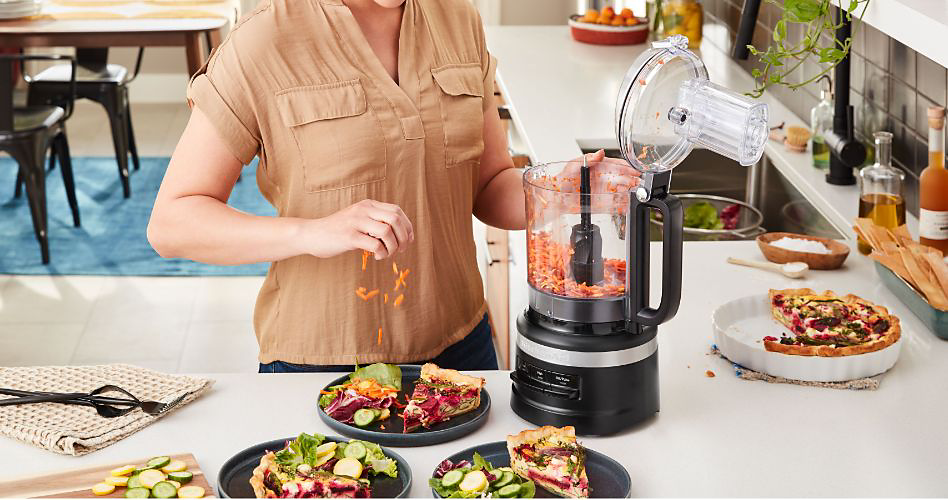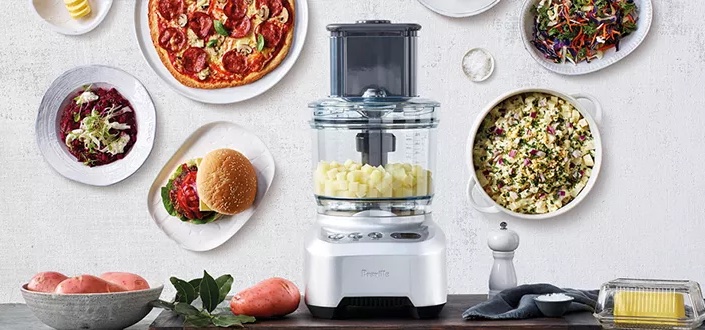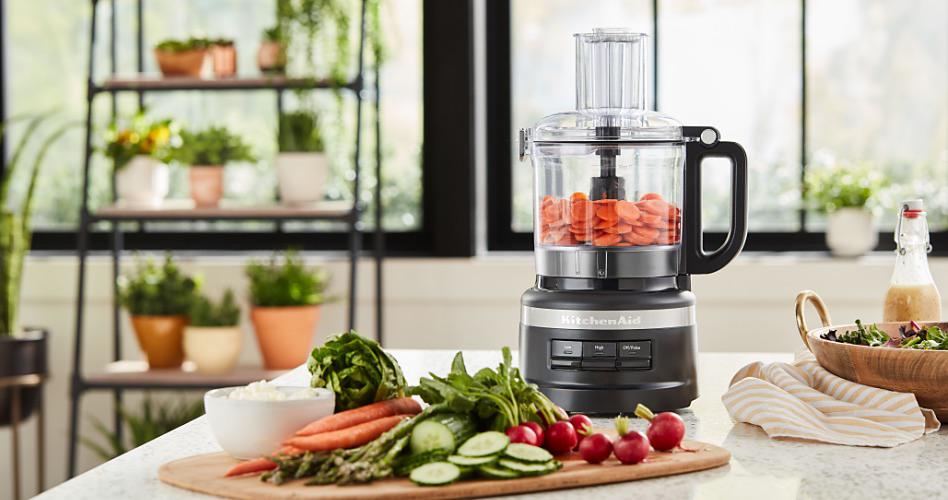
Food processors are a unique type kitchen appliance. They’re great for achieving even cuts, ideal for chefs with limited hand mobility (including ageing home chefs), and are invaluable for batch cooking enthusiasts!
What is a food processor?
Food processors are a small kitchen appliance that specialize in slicing, shredding, dicing, and chopping. A very common kitchen mistake is confusing a food processor for a blender, as the two look similar. However, while they have some overlap, they’re each specialized for different uses. You can learn more about these as well as everything a food processor can do in detail, in the food processors buying guide.
Blenders vs food processors
Blenders use a fixed blade. They’re ideal for creating smooth, uniform end results. If you want to make a soup, smoothie, hummus, or crushed ice drink, you’d want to reach for a blender. Blender are better for liquids and pourable results.
Food processors, on the other hand, use multiple blades or slicing discs to create larger end results. Where a blender purées, food processors can instead deliver even slices of vegetables, perfect shreds of cheese, diced tomatoes, etc. Food processors can achieve uniform, chunky results, which blenders cannot.
For an appliance that works similarly to a food processor but takes up less space, try the smaller food chopper. These are great for 1-2 person households. You can check out my review of the Cuisinart Cordless Food Chopper here.
The best uses for food processors
Food processors are ideal for creating uniform, coarse ingredients. That can make them invaluable for ingredient preparation, especially for home chefs who love to cook in big batches. If you want to slice, dice, and shred very quickly and efficiently, then you need a food processor to help you out in the kitchen.
What can you make with a food processor?
You can do a lot with a food processor, but here are my three favourite ways to use them.
- Shredded cheese. I use shredded cheese all the time, but it’s a pain to shred at home—especially for chefs who experience conditions like carpel tunnel syndrome or arthritis. Using a food processor to shred your own cheese means that it stays fresh in your fridge for longer. It also means that you can shred any cheese, not just what’s available pre-shredded at the supermarket. Plus, by buying cheese by the block and shredding at home, you can often save money on your groceries. (Whole blocks of cheese are typically a much better buy per 100 grams than the shredded bags!)
- Sliced vegetables for sandwiches and pickling. I make a fantastic sandwich, and fresh ingredients play a big role in that. Using a food processor can help you get perfect slices of tomatoes for burgers and sandwiches, as well as uniform cucumber slices for pickling at home. The secret to my sandwiches are homemade butter pickles, which I make big batches of twice a year for sandwiches, hostess gifts, and snacks.
- Homemade salsa. Using a food processor to slice and dice gives you the flexibility to make healthier versions of your favourite store-bought dips, pestos, antipastos, and salsas at home. Use the pulse function on your food processor to blend fresh ingredients like tomatoes, peppers, and onions. This is especially great for people on low-sodium diets—and for those who like to customize their salsas to make them extra spicy.
Do you need a food processor?
I personally don’t think that food processors are a must-have in all kitchens, but if you love to cook, then they’re very handy. You may need a food processor if you cook in large batches, like to make healthy meals with fresh ingredients, or want to cut down your food prep time.
Shop Best Buy’s selection of food processors online today, and check out the food processor buying guide that’ll help you choose the perfect one for your kitchen.





